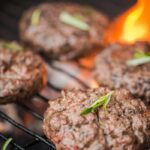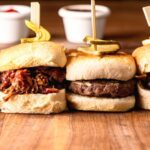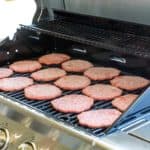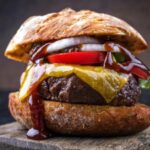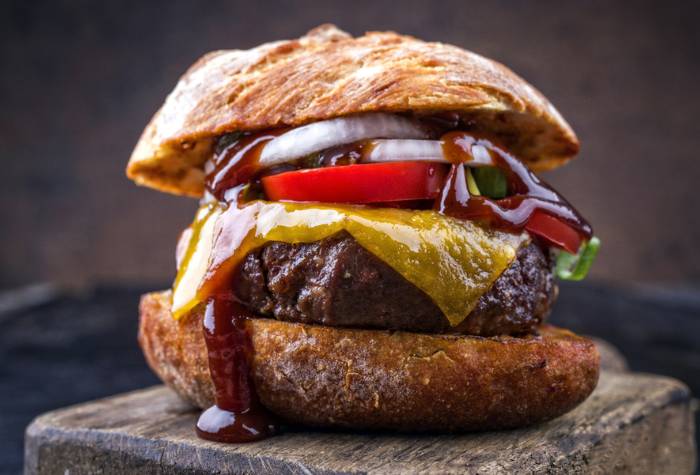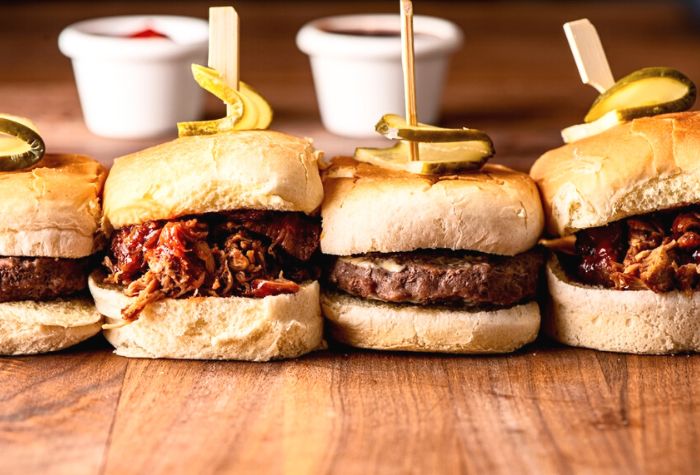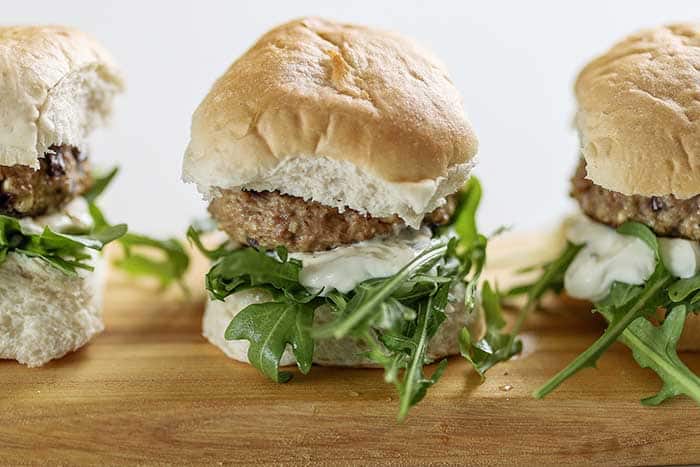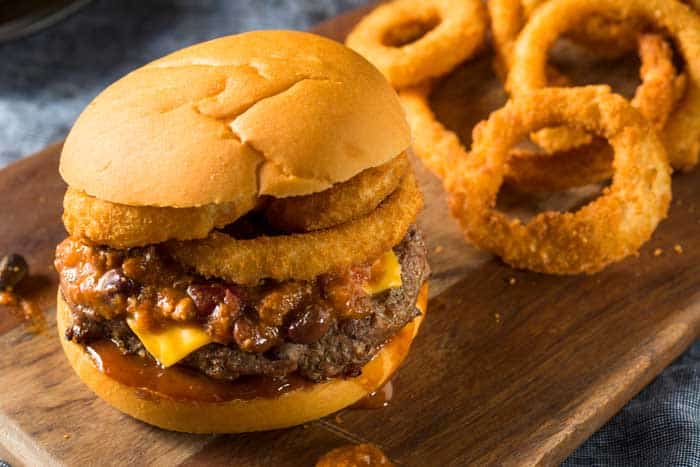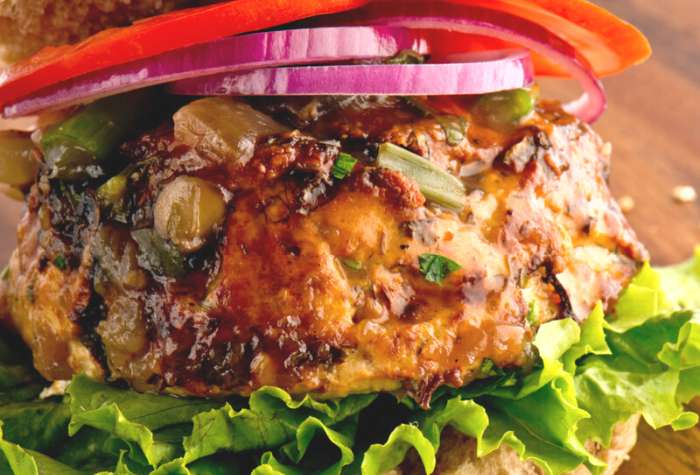Discover how to cook the ultimate hamburger with our easy burger temperature guide. Everything you need to know for perfect grilled beef patties, from medium to well-done.
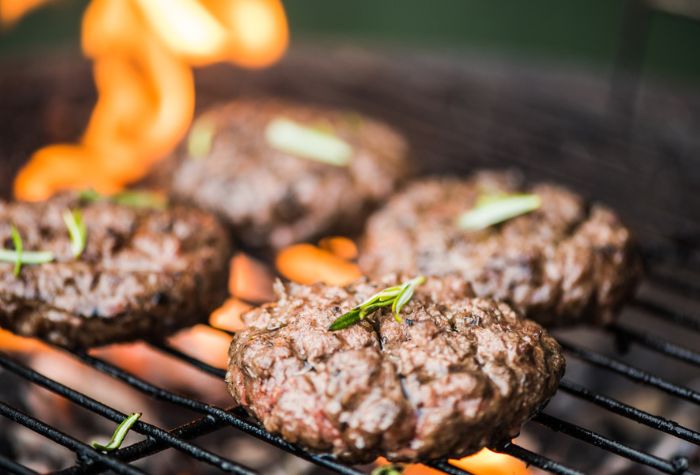
You probably already have a preference for how you like your burgers to be cooked, but knowing how to achieve burger perfection at home is a totally different ball game.
Striking the right balance between juicy and tender but with a delicious sear can be more challenging than it sounds. Thankfully, with little more than a meat thermometer and a little guidance, you can be well on your way to that perfect grilled hamburger beef patty.
Whether you prefer your burgers done medium-rare or well-done, these are the burger temperatures you need to learn today.
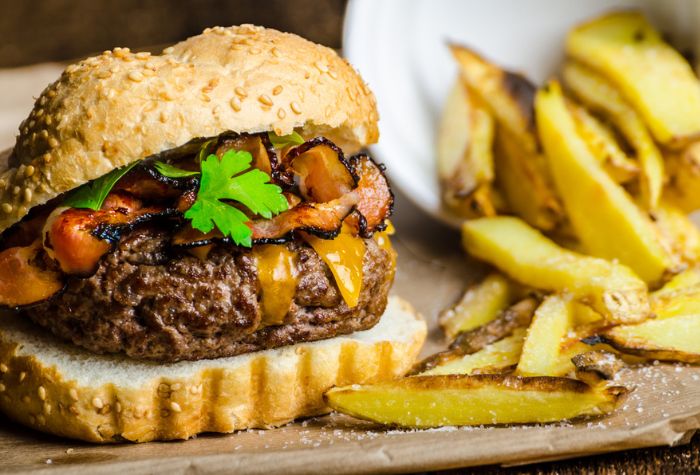
Burger Temperature Chart
The level of doneness on a burger can be checked by testing its internal temperature, best done with a digital meat probe. Our easy burger temperature chart below provides a quick look at what to aim for, for each level of ‘doneness’:
| Doneness | Internal Temperature (°F) | Internal Temperature (°C) |
|---|---|---|
| Rare | 120 – 125 | 49 – 52 |
| Medium-Rare | 125 – 135 | 52 – 57 |
| Medium | 135 – 150 | 57 – 66 |
| Medium-Well | 150 – 160 | 66 – 71 |
| Well Done | 160 – 165 | 71 – 74 |
Note: There is a little bit of scope for people to define doneness differently, but you will only find variations of 5-10 degrees either way.
How to Test Hamburgers for Doneness
The temperature in the grill and the temperature of the burger are different things. This is a crucial distinction, and the only reliable way to test whether a burger is done is to check the internal temperature.
To check your burger’s internal temperature, your best bet is to use a meat thermometer. Thankfully, a good meat probe isn’t expensive, and some instant-read thermometers can give you a reading in a few seconds when inserted into the burger.
Due to the shape of burgers, the meat thermometer shouldn’t go in the top. Place the metal probe horizontally through the middle of the burger (be careful not to touch the grill with your hand). If you take a vertical reading it will be less reliable as some of the metal may touch the grill surface or may penetrate the patty completely.
Nobody can reliably check the internal temperature with any method besides using a thermometer, no matter how skilled they may claim to be. Use one, and be sure to keep it clean between each use.
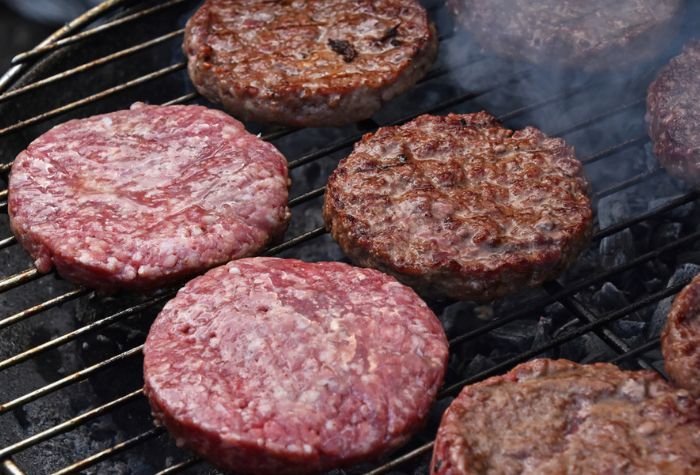
Essential Hamburger Grilling Techniques
To make sure your burger is deliciously cooked there are a few techniques you should master.
Never Press Burgers
Pressing your burgers does not help them cook quicker. All you are doing is squeezing some of the juice out of the burgers, and those juices provide texture and flavor in the burger, so you will want to keep them inside.
Always Rest Burgers
Raw meat contains juices in structures that are called myofibrils and during cooking some of these drip off the burger. The burger will continue to residually cook when you remove it from the heat, and if you let them rest for about five minutes, the proteins within will relax, allowing some of the juices to absorb back into the burger and providing a more juicy texture. Place the burgers on foil while they are resting to stop these juices from dripping away onto the grill.
Don’t Flip Too Early
Burgers do need to be flipped, and you should ideally do this at the halfway stage in their cooking. This may be between three and five minutes (most burgers cook in 10 minutes or less). You can tell when it is time to flip as the bottom of the burgers will brown and develop a crust.
If you flip too early there is every chance your burgers will break up and disintegrate, and you may even lose some into the fiery pit below.
Ground Beef Temperature Guidelines
The USDA guidelines for cooking ground beef state that it must be cooked to a “safe minimum internal temperature of 160°F (71°C)”.
If a restaurant or smokehouse wants to serve a medium-rare burger that never reaches an internal temperature of 160°F, they still have options. The USDA would call this a ‘high risk’ food, which means the restaurant must have carried out a HACCP relating to the way they handle and prepare the food, and kept a record of their findings.
HACCP stands for Hazard Analysis and Critical Control Point and is a food safety system used all over the world. It means they must work out the risks and address them appropriately.
For instance, the HACCP plan may state that the burgers will instead be cooked to 135°F, but to mitigate risks the meat would be ground from one cut of meat within the restaurant, reducing the chance of cross-contamination by minimizing the chances of the beef coming into contact with other cuts that could carry bacteria. Vetting the source of beef by using USDA-approved suppliers also means you can be confident of the quality, knowing the USDA agents have inspected the facility in which they prepare the beef.
Risks With Ground Beef
As with all animal products, there are risks within ground beef, and therefore in burgers.
Salmonella and E.coli are among the main risks in ground beef, and E.coli 0157:H7 is particularly concerning. E.coli 0157:H7 can damage the intestines and even cause kidney disease that can be fatal in up to 10% of cases.
Listeria can also be found in ground beef, and this bacteria causes around 1,600 cases of listeriosis every year. An average of 260 people die from this each year, and the infection is most severe among people with weakened immune systems, pregnant women, newborns, or the elderly.
Mass-produced ground beef that you buy from the store doesn’t have a high risk, but it does have more risk if it contains multiple sources of beef that have been mixed together in processing. If one cow is contaminated, this could get mixed in with many others causing a whole batch of beef to carry this bacteria. This is why the USDA recommends cooking to the temperature where this bacteria dies and the meat is safe to eat.
Reducing the Risks of Contamination
It is scary reading about the potential diseases present, but a few simple steps can help you to reduce the risks of contamination.
- Safe handling of raw meat. Before you handle any raw meat, wash your hands thoroughly, and wash surfaces used both before and after. You should also wear an apron that can be put in the wash after, and use a separate chopping board for raw meat. Don’t use the board for multiple cuts of meat without washing it.
- To reduce the risks of cross-contamination, keep raw meat separate from the rest of your food when bringing it back from the supermarket, putting it in a separate bag. The FDA’s guidance is to “Separate raw meat, poultry, seafood, and eggs from other foods in your grocery shopping cart, grocery bags, and refrigerator.”
- Sanitize and clean the kitchen surfaces regularly and never mix cooked and raw food
- Always store raw meat at 40°F (4°C) or below in the fridge. The same applies if you are going to store cooked burgers with a view to reheating them, which is fine as long as you use them within three days and reheat them to the safe temperature of 160°F again.
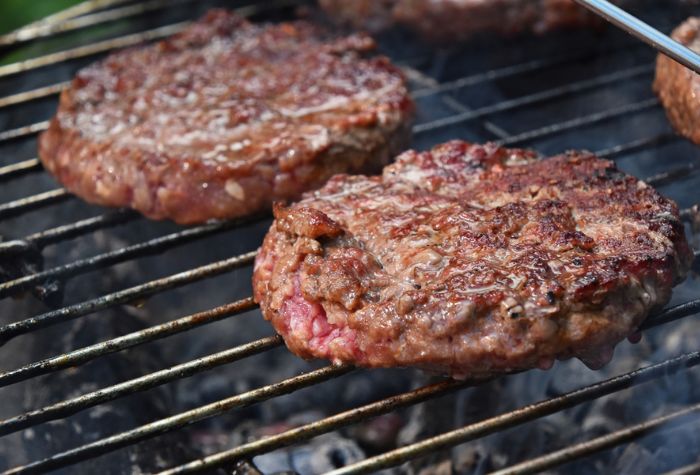
Is it OK if Your Burgers Are a Little Pink?
You can keep a little pink in the middle of your burgers as long as you take precautions.
One of the key precautions is knowing where the meat has come from. Grinding your own meat is the best way to deal with this. If you buy a chuck steak and grind it into burgers, you can be confident it hasn’t been mixed with other meat.
You should never cook a burger that only reaches an internal temperature of 120-125°F (49 to 52°C) as this can be unsafe, but cooking to 135°F (57°C) is safer, and at this temperature you are still likely to have a bit of pink in the middle.
Many of us find well-done burgers to be tough and dry. A bit of pink in the middle is a sign that the burgers will still be juicy, but if you cook to 160°F (71°C) then there is not much chance of there being any pink left in the burger.
It is riskier to cook to lower temperatures, but as long as you take precautions you should be safe at medium-rare and medium temperatures. If you can’t verify where the meat has come from or how it has been ground then 160°F is the minimum internal temperature for safety. No exceptions.
